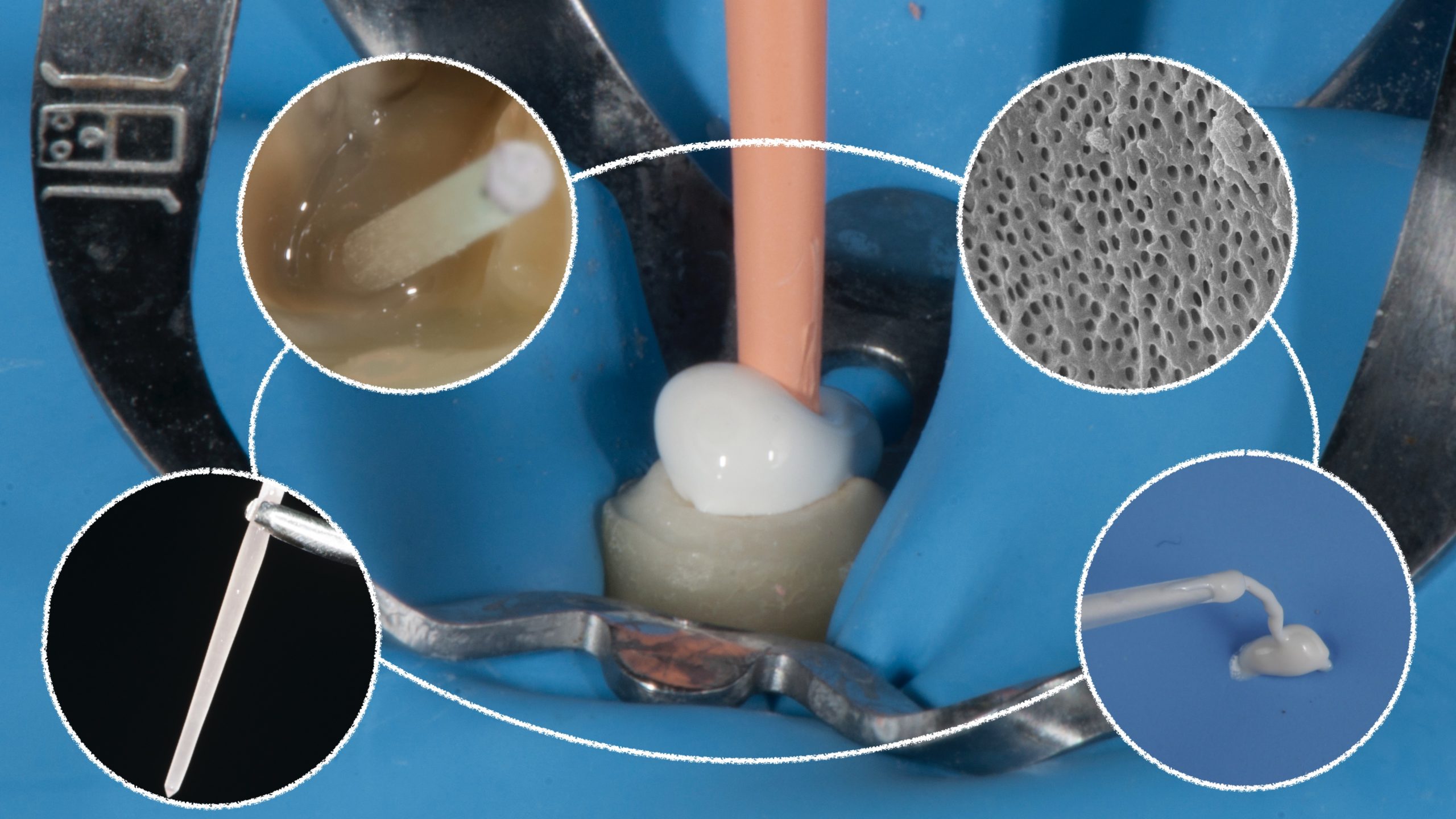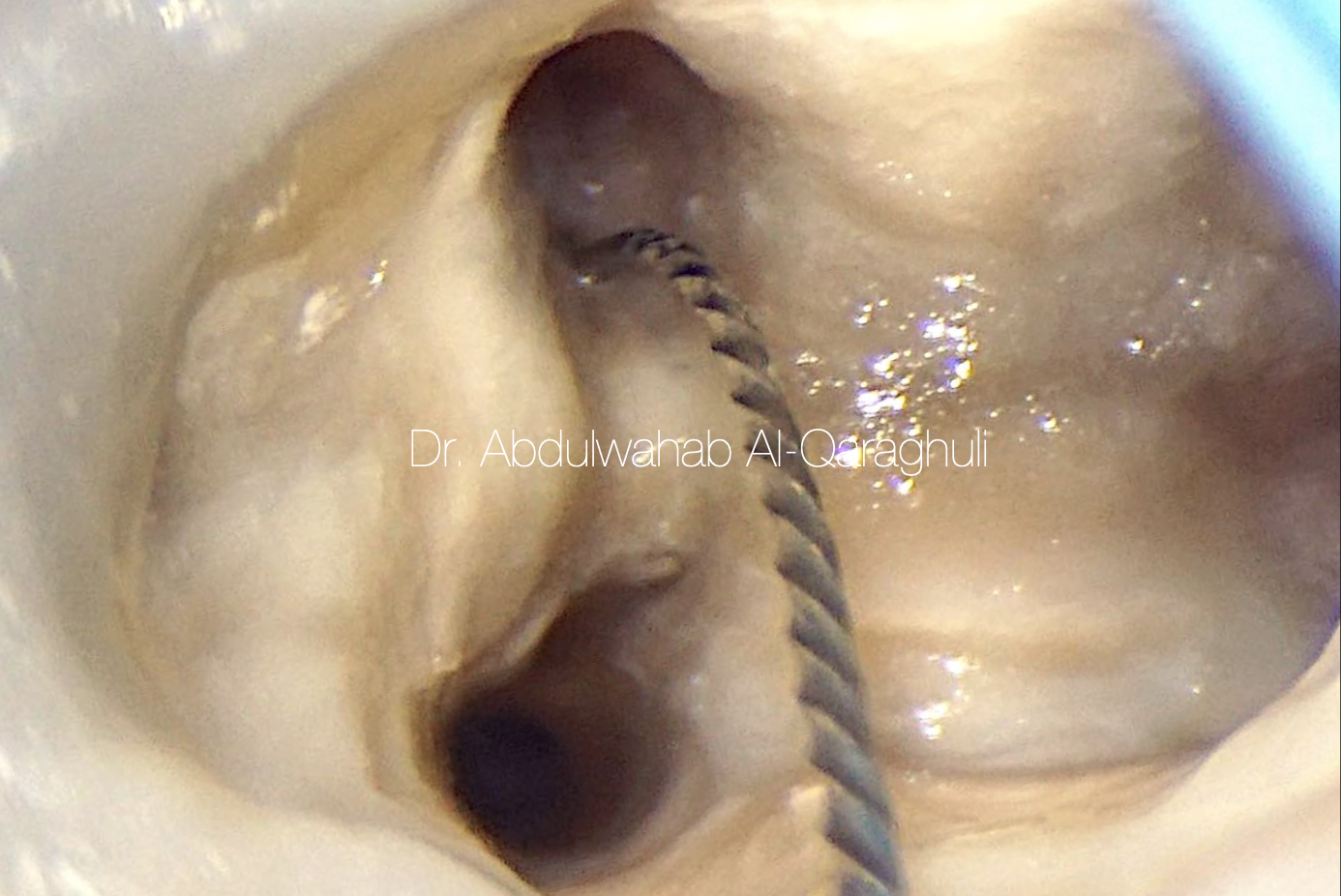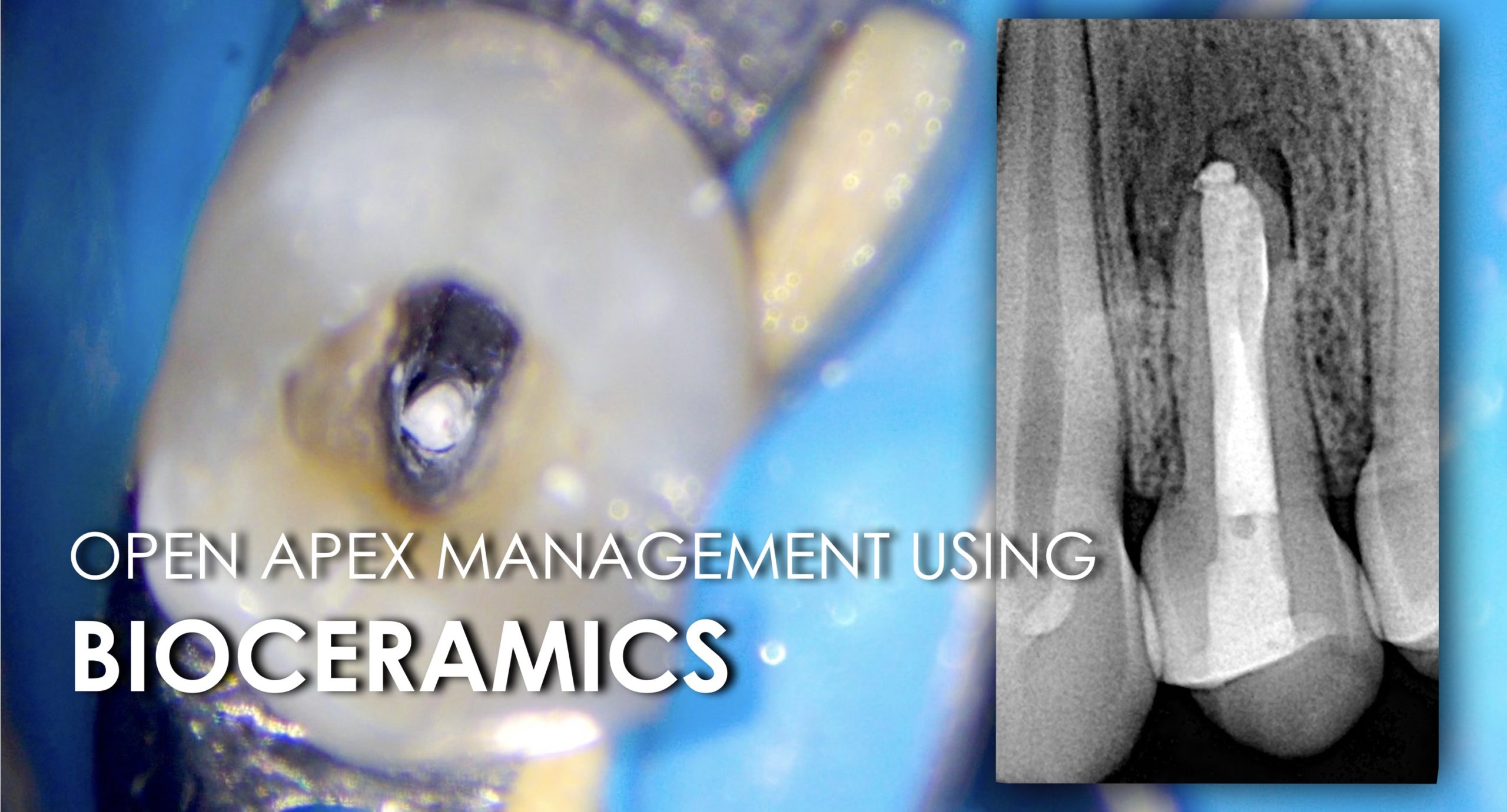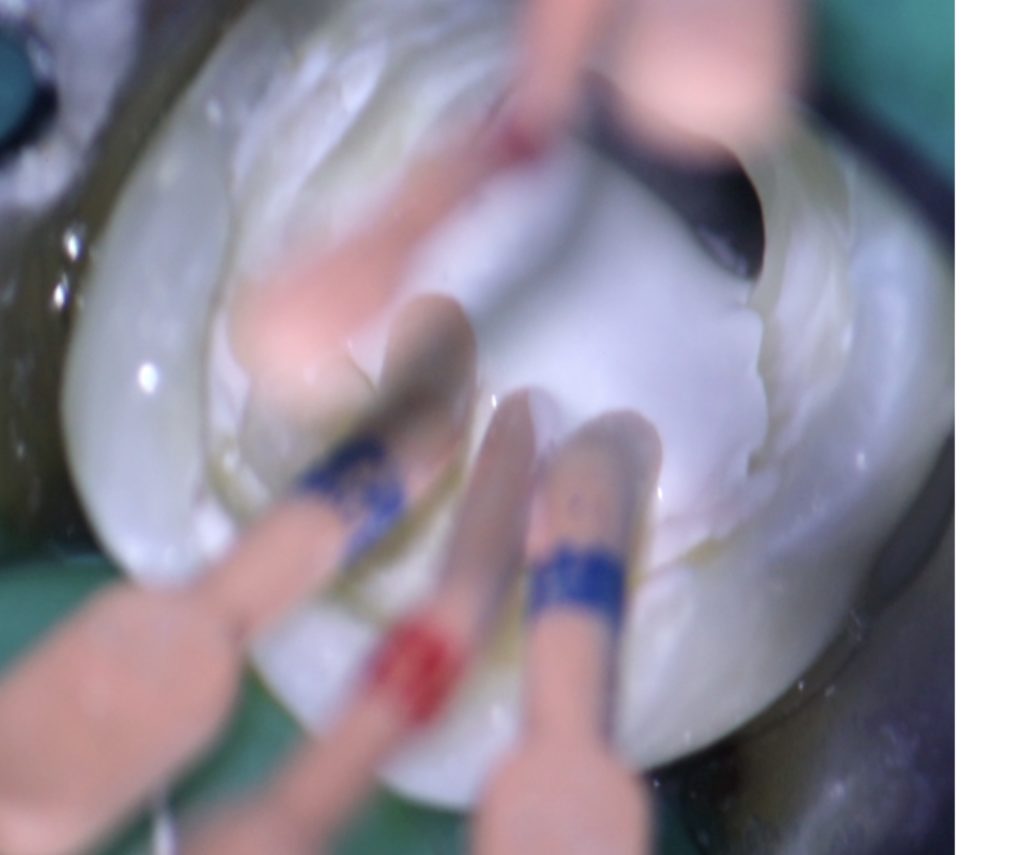
Bioceramics: The Game Changer in Endodontics
05/10/2023
João Meirinhos
Warning: Undefined variable $post in /var/www/vhosts/styleitaliano-endodontics.org/endodontics.styleitaliano.org/wp-content/plugins/oxygen/component-framework/components/classes/code-block.class.php(133) : eval()'d code on line 2
Warning: Attempt to read property "ID" on null in /var/www/vhosts/styleitaliano-endodontics.org/endodontics.styleitaliano.org/wp-content/plugins/oxygen/component-framework/components/classes/code-block.class.php(133) : eval()'d code on line 2
Hydraulic Calcium Silicate sealers may be considered as an interesting solution to make the obturation steps reliable and easier to achieve. The purpose of this article is to report and present the advantages of a simple and faster technique to improve the 3D obturation.
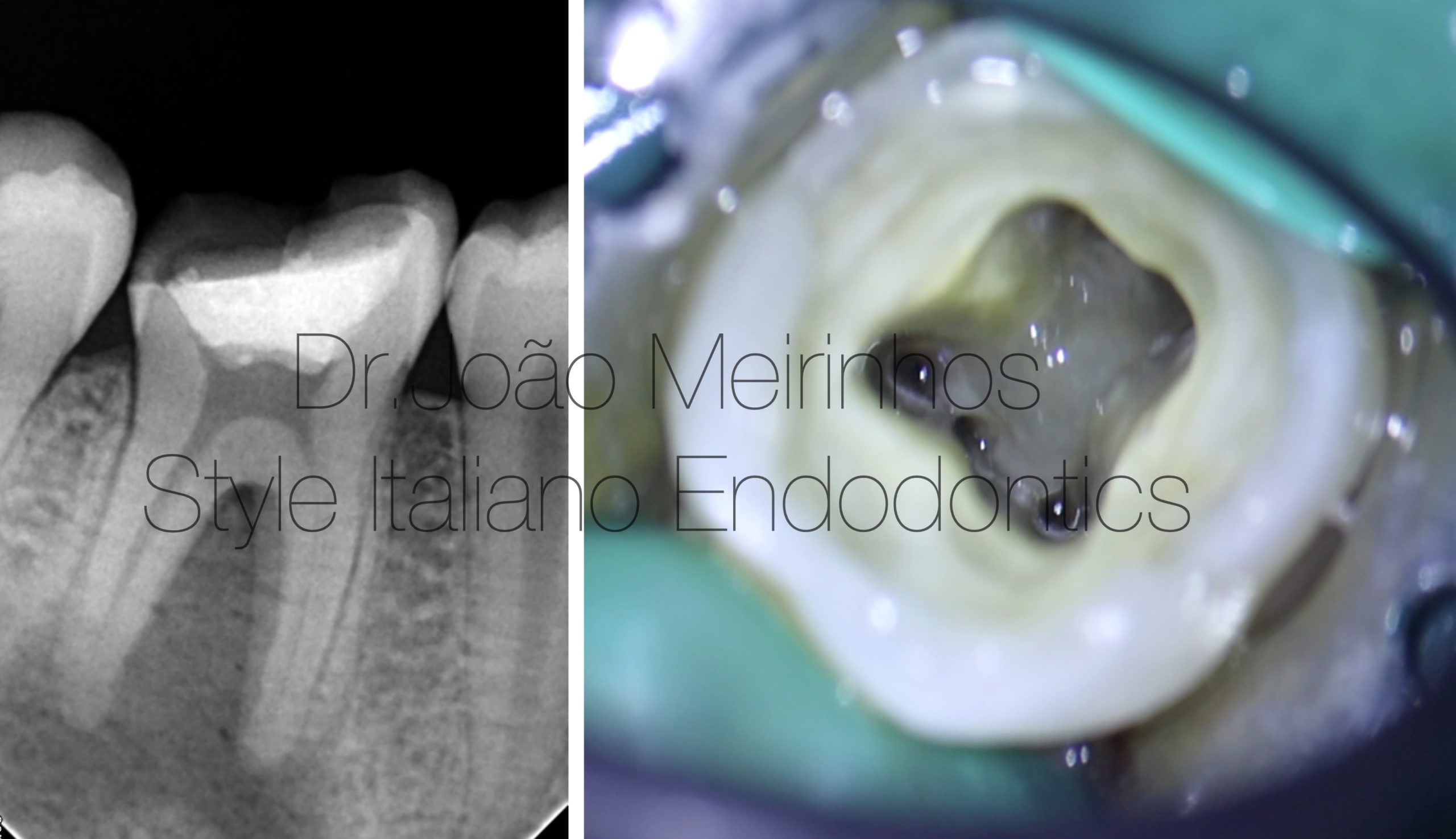
Fig. 1
A young female patient was referred by general practitioner that was not able to perform the root canal treatment correctly on tooth 46 due to the lack of experience and all the material necessarily to a normal endodontic appointment. The tooth was diagnosed with a necrotic pulp and symptomatic apical periodontitis. After evaluation, a non surgical approach was proposed.
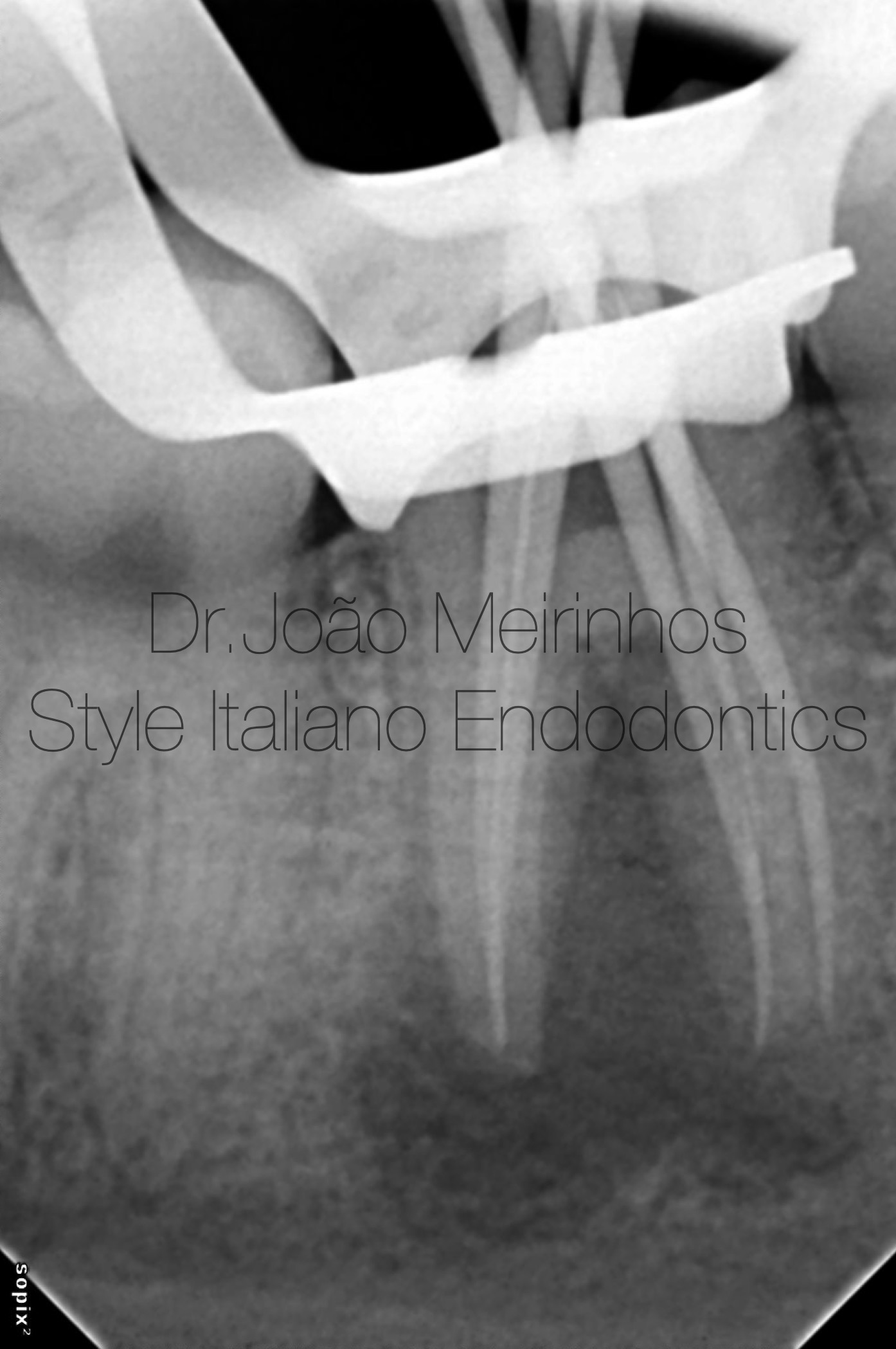
Fig. 2
The non surgical treatment started with establishing access with Ultrasonic tips Start-X (Dentsply Tulsa Dental, USA) and location of all canal orifices. Three mesial canals were found, and a coronal pre-flaring was done. The canals were scouted with 10k and 15k stainless-steel hand files (K- File, Dentsply Maillefer, Switzerland). To determine the working length, the electronic apex locator Root ZX (Morita Corp. Tokyo. Japan) was also used. All the canals were shaped with Reciproc files (r25, r40) (VDW, Germany) according to the manufacturer’s instructions.
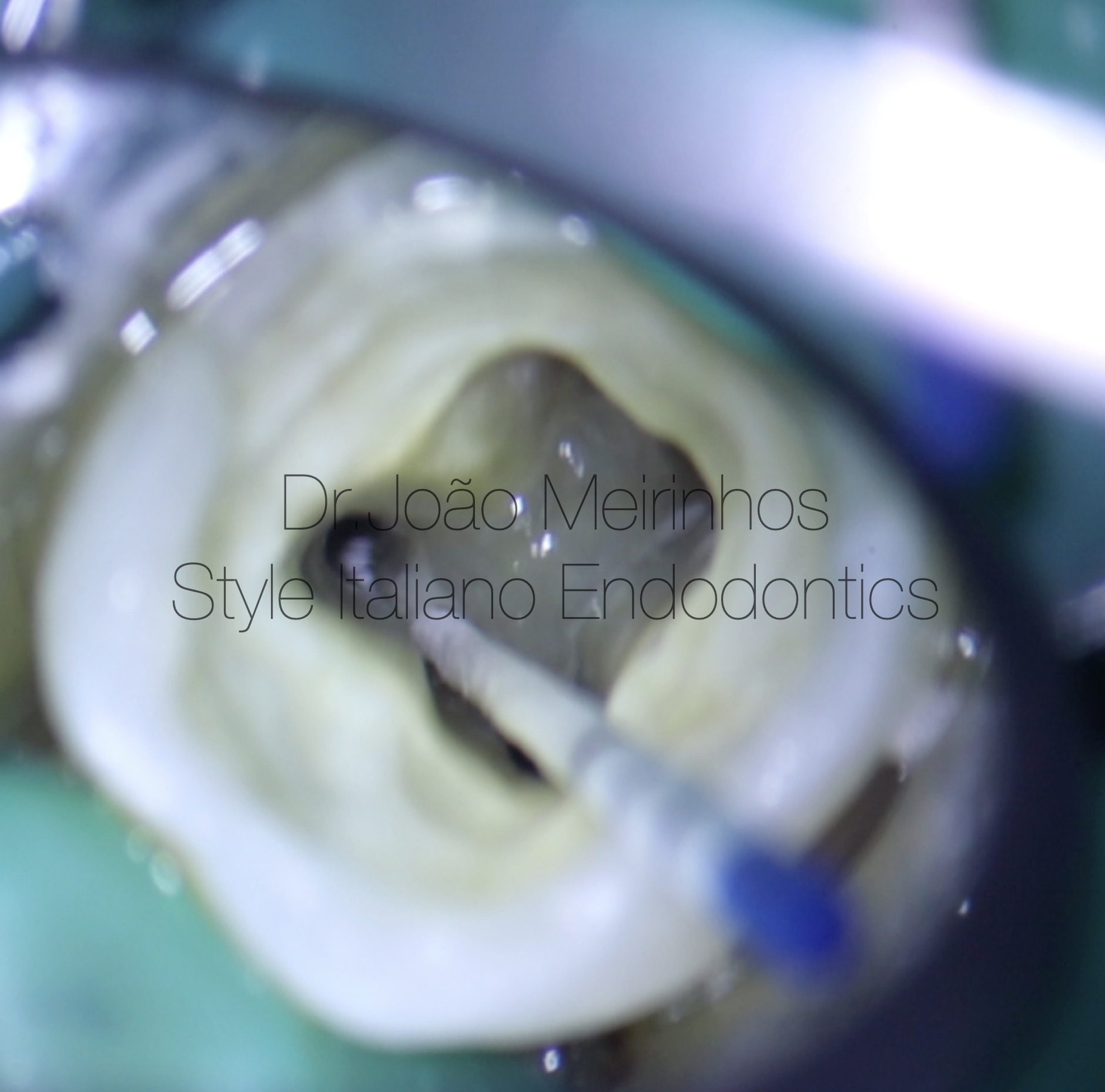
Fig. 3
Copious irrigation with 5mL syringe and a 27G notched needle (CanalPro Slotted-End Tips, Coltene, Henry Schein, Australia) with 5,25% sodium hypochlorite (Denta Flux, J. Ripoll SL, Spain) was done all throughout the endodontic treatment. The canals were dried with paper points (Zipperer, VDW, Munich, Germany).
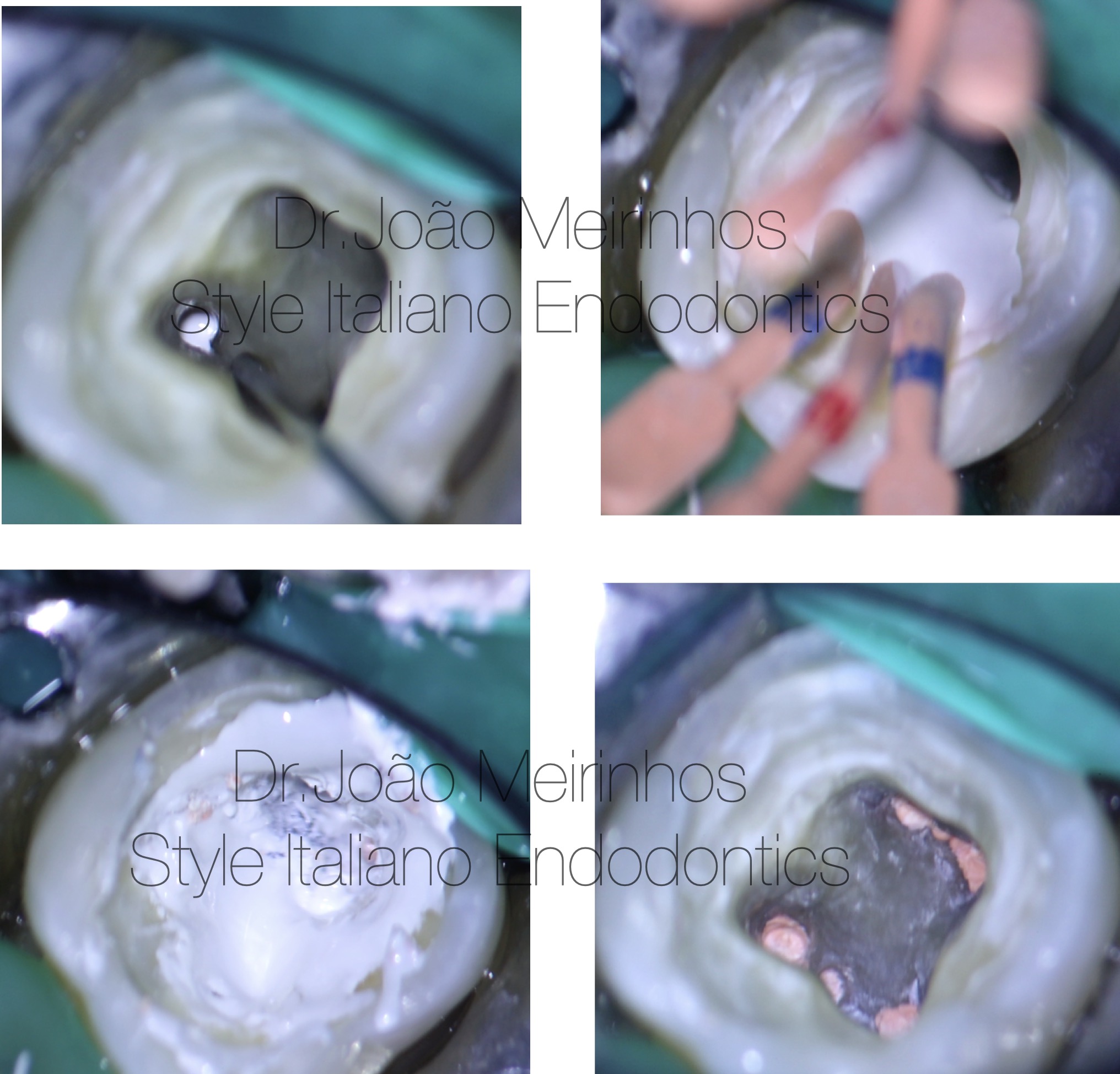
Fig. 4
The canals were filled with gutta-percha and calcium silicate sealer (VDW.1Seal Bioceramic Sealer, VDW, Munich, Germany) with a cold hydraulic condensation technique. The B&L system (Biotech, USA) was used to cut the master cones in the coronal zone.

Fig. 5
The canals were sealed with a flowable composite resin (Supraflow, R&S, CFPM, France) and was recommend a cuspal coverage restoration.
Video of the case
Conclusions
The hydraulic condensation is a simple and effective obturation technique that is supported by literature. More, the sealer is what really seals the root canal providing adherence between gutta-percha and dentinal walls to avoid gap occurrence at the sealer-dentine interface. Also, sealers with the ability to enhance osteogenesis have the potencial to promote faster and more predictable healing of apical periodontitis.
Bibliography
- American Association of Endodontists. Glossary of Endodontic Terms, 8th ed. Chicago: American Association of Endodontists; 2012.
- Camilleri J, Atmeh A, Li X, Meschi N. Present status and future directions: Hydraulic materials for endodontic use. Int Endod J. 2022 May;55 Suppl 3(Suppl 3):710-777. doi: 10.1111/iej.13709. Epub 2022 Mar 17. Erratum in: Int Endod J. 2023 Mar;56(3):402.
- Trope, Martin; Bunes, Alf; Debelian, Gilberto (2015). Root filling materials and techniques: bioceramics a new hope?. Endodontic Topics, 32(1), 86–96.
- Guivarc'h M, Jeanneau C, Giraud T, Pommel L, About I, Azim AA, Bukiet F. An international survey on the use of calcium silicate-based sealers in non-surgical endodontic treatment. Clin Oral Investig. 2020 Jan;24(1):417-424.
- Garrib M, Camilleri J. Retreatment efficacy of hydraulic calcium silicate sealers used in single cone obturation. J Dent. 2020 Jul;98:103370.


